#christine nilsson
Photo
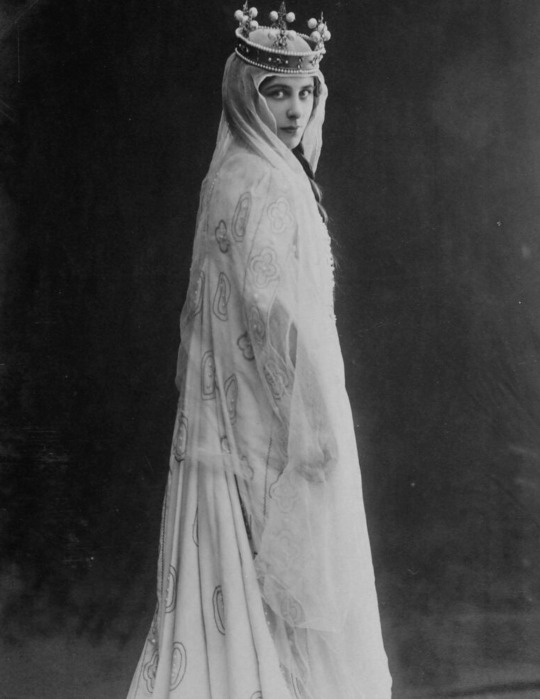


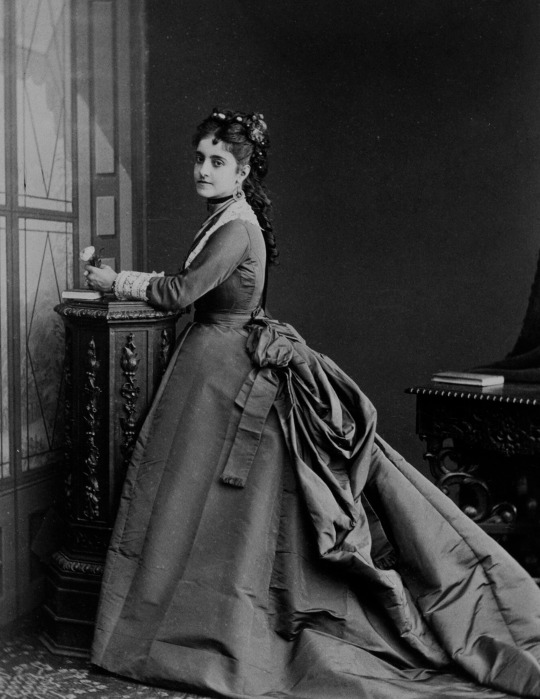


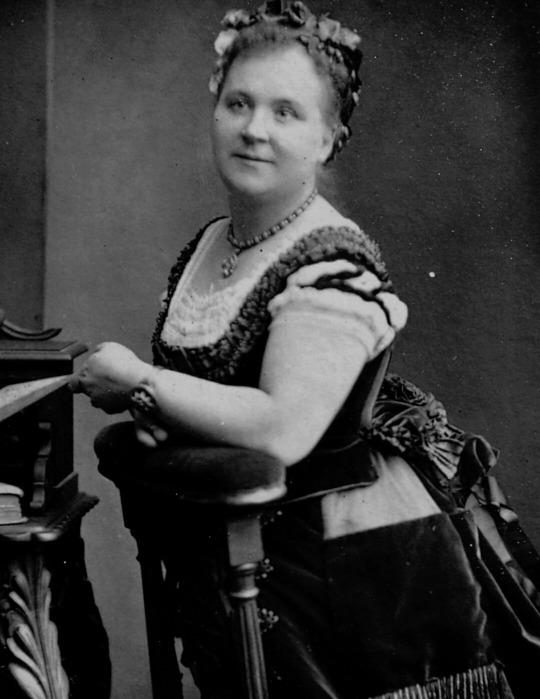
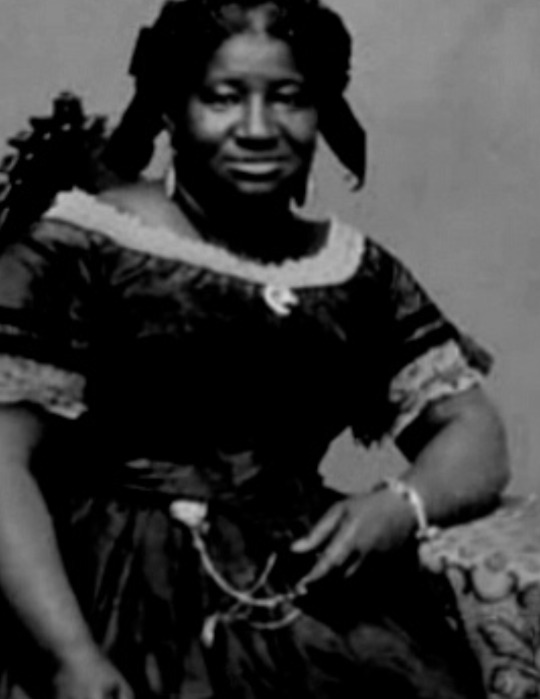


vintage soprano opera singers
#history#photography#beauty#soprano opera singers#geraldine farrar#christine nilsson#yma sumac#adelina patti#nellie melba#jenny lind#helen lemmens-sherrington#elizabeth greenfield#kirsten flagstad#mary garden#most are victorian era but i threw in some 20th century ones too#photography vintage#vintage#ph
459 notes
·
View notes
Text

March 5. 1868 the first performance of Arrigo Boito’s Opera “Mefistofele” was presented at the Scala di Milano. Here we see the very rare original castlist from the first performance of this Opera at The Metropolitan Opera 1883 six weeks after the opening from the MET.
#classical music#opera#music history#bel canto#composer#classical composer#aria#classical studies#maestro#chest voice#Arrigo Boito#Mefistofele#La Scala#Metropolitan Opera#Met#Christina Nilsson#Christine Nilsson#dramatic coloratura soprano#coloratura soprano#soprano#Swedish Nightingale#The Nightingale#classical history#classical musician#classical musicians#opera history#historian of music#musician#musicians#diva
11 notes
·
View notes
Text

Caption: Marriage of Mademoiselle Christine Nilsson and M. Rouzaud in Westminster Abbey. Illustration for The Graphic, 3 August 1872.
Nilsson married Auguste Rouzaud (b.1837) at Westminster Abbey, London, on July 27, 1872. The wedding was boycotted by the groom's family. The marriage lasted until February 1882 when Rouzaud died in Paris after a period of illness. Source: Wikipedia
August Rouzaud didn't enjoy watching his wife on stage in Paris. She could sing wherever she wanted, but not in Paris. During this first marriage Christine appeared a lot in London and on tours. August Rouzaud eventually became mentally ill and was put in an asylum, where he used to climb the trees in the garden believing that he was a rising stock market. Source: Library of Nineteenth Century Photography
In March 1887, Christina Nilsson married Don Angel Ramon Maria Vallejo y Miranda, Count de Casa Miranda (b.1832), a Spanish journalist and diplomatic official. The wedding took place at La Madeleine, Paris. Her marriage made Nilsson the Countess de Casa Miranda.
#christine nilsson#l'eglise de la madeleine#poto adjacent#opera#westminster abbey#i wish i had an image of the wedding at the madeleine
31 notes
·
View notes
Text
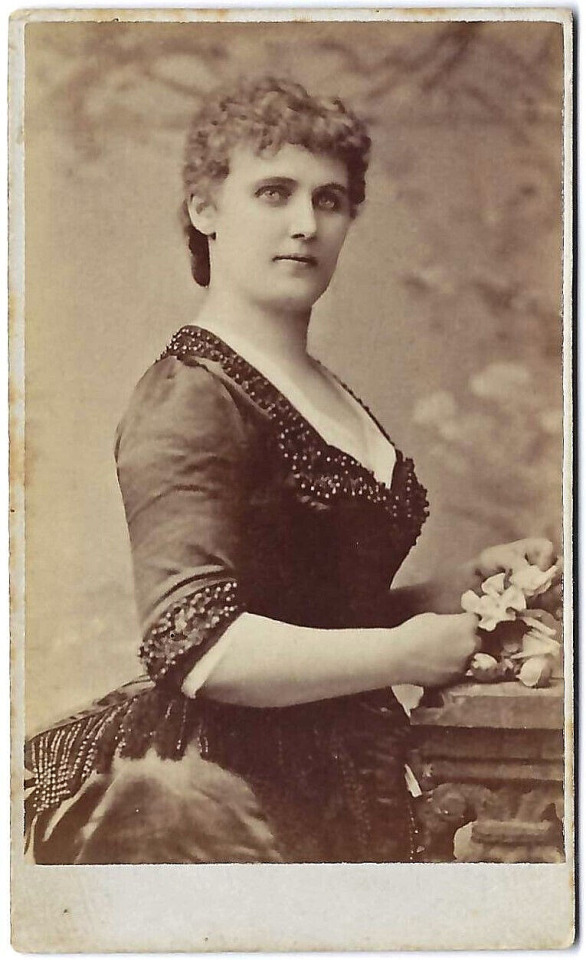
#christina nilsson#christine nilsson#christine daaé#opera#singer#bel canto#soprano#dramatic coloratura soprano#the nightingale#swedish nightingale#swedish opera singer#the phantom of the opera#le fantôme de l'opéra#gaston leroux#paris opera#her majesty’s theatre#drury lane#covent garden#royal albert hall#royal opera house#the metropolitan opera#mariinsky theatre#photography#classical singer#classical singing#classical music#music history#classical studies#diva#aria
14 notes
·
View notes
Text

2 notes
·
View notes
Text
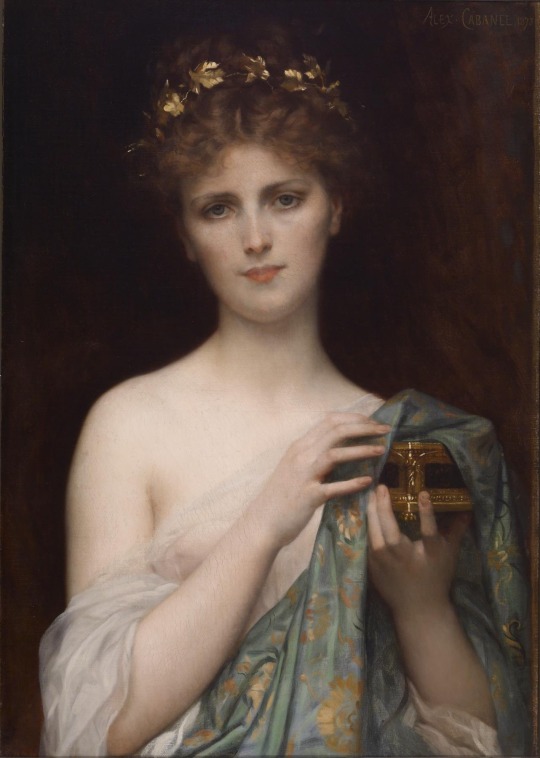
Pandora by Alexandre Cabanel
#pandora#pandore#mythological#painting#art#alexandre cabanel#realism#portrait#pandoras box#greek mythology#swedish soprano#christine nilsson#christina nilsson#forbidden box#model
32 notes
·
View notes
Text
Several POTO fans and viewers Imagine book! Carlotta Giudicelli to have a more shrill speaking voice, similarly with how some POTO adaptations depict her to be
I imagine book! Carlotta to have a more resounding, yet clear speaking voice - a type that can command respect without having to raise her voice, similarly with Maria Callas' voice btw
In fact, I have Maria Callas in my head whenever reading about book! Carlotta
I also imagine book! Christine Daae to have a usually soft, melodious and lilting speaking voice, with a lilting Swedish accent
Kinda like Sarah Brightman's voice yet with a Swedish accent
In fact, I have Sarah Brightman and Christine Nilsson in My head whenever reading about book! Christine Daae
🤩🤩🥺🥺🥺
1 note
·
View note
Text

Shared from my Instagram—I figured if anyone had any leads or helpful info, it would be the fine folks of tumblr.
The blue is just a placeholder for now…and I’m not sure about the wig color either. Or if it even is a wig. Some of Christina Nilsson’s photos have these big bumps on the top of the head (which I’m partial to for the drama) but then others look like a much more naturalistic Dutch braid of some kind.
#I know it’s just fiction and I’m only one person trying to do everything but I do try to be accurate even if it doesn’t always show lol#if I had the money I’d have a historical fashion expert on staff I’m not even kidding.#fantomestein#christine daae#Christina Nilsson#poto#phantom of the opera
69 notes
·
View notes
Note
Do you think it's just merely coincidence that Leroux's Christine is Swedish so her situation can be loosely compared to Stockholm Syndrome?
Well, Stockholm syndrome as a concept that people knew about and referenced, didn't exist until (does some quick Googling) after 1973, and last I checked, Leroux's novel was written in (does some more Googling), oh look, 1909.
So yes, I think it is a complete coincidence.
#GP gets asks#anonymous#her Swedishness probably has far more to do with the fact that she's based off Christine Nilsson
11 notes
·
View notes
Text
youtube
the palais garnier phantom video is up!! :D
#and it's been up since the 29th!!! :o#the insta post said it would be up on saturday but this is sunday... and french time is way after us time!#it's so weird! :o#anyways the video is up and i'm so ready to watch it!!! :D#edit: i've seen it and it's amazing! :D#there are goldfish inside the water cellar!#and apparently christina nilsson isn't just the name inspo for christine... she's legit her?#the guy called erik's name at the end of the second section and it was so cute!#i bet erik's ghost was like 'wait how does he know my name?'#also the ballerina step crack story happened 44 years after rewrite meg told christine about it so... whoops?#rewrite meg is a time traveler confirmed! ;D#this video was a bit short but i still loved it! :D
0 notes
Text
0 notes
Photo



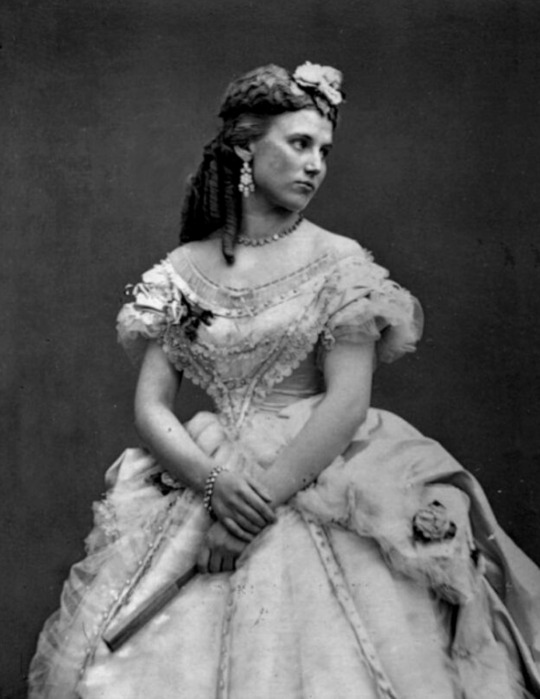
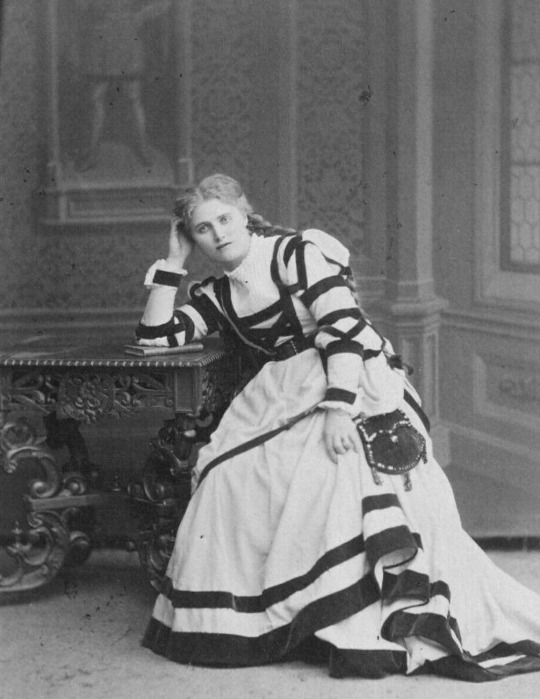
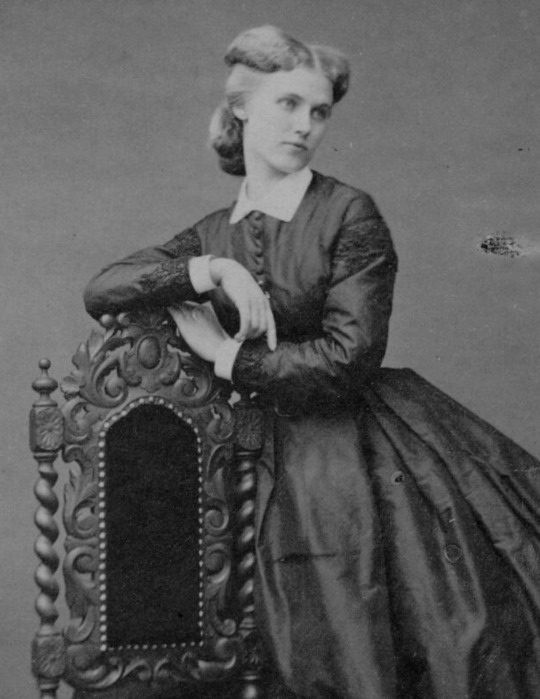


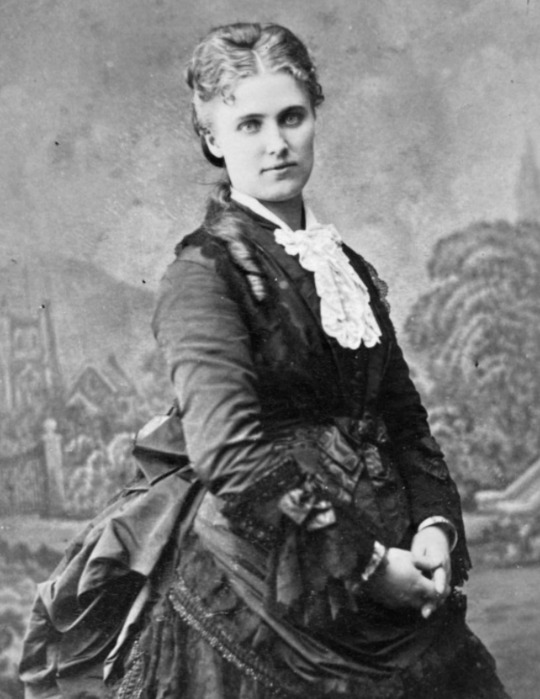
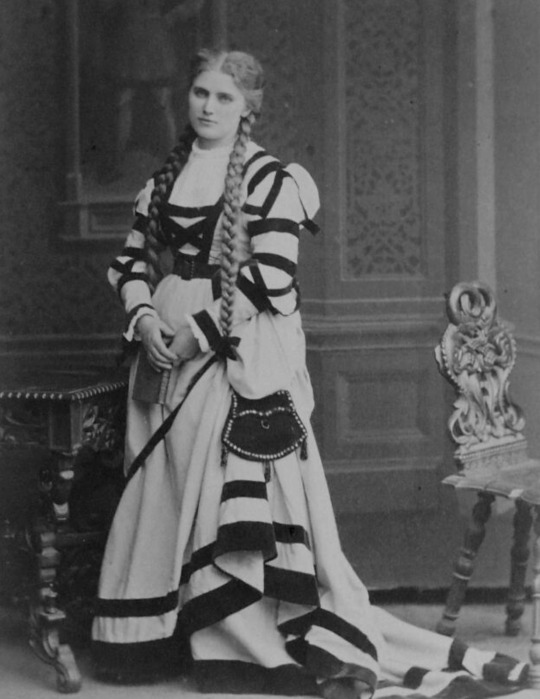
christina nilsson (1843-1921) was a swedish operatic soprano. nilsson is widely believed to have been the inspiration for christine daaé, the heroine of gaston leroux’s novel the phantom of the opera. towards the end of his life, leroux claimed the character was based on a real opera singer “whose real name I hid under that of christine caaé”, and details of nilsson’s early life heavily reflect details in the fictitious christine daaé’s history.
#plus they kinda of resemble the character#history#christina nilsson#the phantom of the opera#gaston leroux#photography#vintage photography#victorian era#vintage#19th century#christine daae#ph#beauty#women in history
489 notes
·
View notes
Text

It has heen well suggested that M. Amhroise Thomas's lyrical version oi Hamlet should have been called Ophelia. The question would not then have been raised in too direct a manner, whether or not Shakespear's tragedy has received worthy treatment at the hands of its operatic adaptors. Moreover, Ophelia, who is not the chief character, who is scarcely even a character of the first degree of importance, in Shakespear's Hamlet, is the principal personage, both in a musical and in a dramatic point of view, in the Hamlet prepared for the composer by MM. Barbier and Carre. Finally, the longest, most elaborate, and altogether the best scene in the operatic Hamlet y does not exist in the Hamlet of Shakespear at all. Here the name of Shakespear cannot be used against M. Thomas ; and if he had confined himself to this scene and entitled it The Death of Ophelia , one universal feeling of admiration would have been expressed for the work. The object, however, of M. Thomas was to produce not a poetical little cantata, but a grand opera containing a great part for Mdme. Nilsson ; and accordingly the scene of OpheHa's death is followed by an act which is superfluous, and is preceded by three acts which are in a great measure irrelevant. The parent notion of the opera was certainly the idea that the fair-haired, soft-voiced, Swedish soprano would be in every way an admirable representative of Shakespear's Scandinavian heroine; and so indeed she has proved. Mdme. Nilsson has deeper qualifications for the part than purely external ones, which, nevertheless, may be said to suggest others. All the sentiment of the character seems to belong to her naturally, so that as an actress alone, if she had not a note to sing, she would still be an admirable Ophelia. Then the pure fresh quality of her voice is quite in harmony with the rest of the personage. If the Shakespearian heroines may be divided into two categories, like the heroines of modern opera, Ophelia is eminently a " light soprano '* part, as Lady Macbeth is a part for a " dramatic soprano." The amount of Scandinavianism discoverable in the character of Shakespear's Ophelia, is, probably, very slight ; but M. Thomas has given a tinge of national colour to the music sung by the Ophelia of his opera. This he has done, not by the vulgar expedient of dragging in one national air in complete form, but by reproducing the character of the Swedish melodies (for operatic purposes Sweden and Denmark are one) in both the heroine's grand scenas, and by employing here and there actual passages of Swedish origin.
In the power of characterisation belonging to music lies one of the strong points of opera as a form of art. A Scotchman sings something in the Scotch style, or a Russian something in the Russian style, and the nationality of the personage is at once painted beyond the possibility of mistake. Neither does M. Thomas make any endeavour in Hamlet to give us a Scandinavian finale, wisely contenting himself with such a finale as the Hebrew-Prussian Meyerbeer might have wi-itten. Ophelia's solos are interspersed with little Scandinavian snatches ; and the villagers of the neighbourhood of Elsinore dance, in one place, to a quaint but very graceful melody which is apparently of Scandinavian origin. But another dance tune in the same scene is clearly derived from the Anglican, not to say cockneyfied, tune of *' Billy Taylor." Others, again, might have been written for any ballroom of the present day. M. Ambroise Thomas may, indeed, be acquitted of all intention
to give a Scandinavian character to his music elsewhere than in the strikingly-coloured part of Ophelia, and in the dance tunes of her young companions.
There are few characters, one would think, in all dramatic literature, less favourable for musical treatment than Hamlet. The address to the ghost, the interview between Hamlet and his mother are, to be sure, dramatic enough in the ordinary sense of the word, and furnish suitable groundwork for operatic scenes. But the character of Hamlet is chiefly known to us from the two great monologues ; and the monologues, though a composer of the very highest genius might, doubtless, be able to find appropriate music for them, are not the sort of ** words " that any ordinary composer would like to set, or could adequately deal with. M. Thomas, differing from all the Italian composers who have grappled with Shakespear, seems to have made an honourable endeavour to give to his principal personages their proper musical physiognomy. Verdi (to take a flagrant instance) makes Macbeth, in the most terrible moment of his career, when its tragic termination already stares him in the face, sing a sentimental air of the conventional pattern, which might just as well be sung by Renato in the Ballo in Maschera, and which — if it had not been written some years earlier — would be regarded as a very close imitation of Balfe's ** Come into the garden, Maud." Signor Verdi would doubtless have treated ''To be or not to be?" as he has treated the
*' words " which in the libretto of Macbeth replace *' Canst thou not minister to a mind diseased?" &c. But though his intentions would not have been so meritorious as that of M. Thomas, the thing achieyed would have been at least melodious. The air would have. had no philosophical character, but it would have been singable and what is called " expressive." It would have been, so to sa}^ in rhyme ; whereas M. Thomas's Hamlet sings persistently in blank verse. The only notable case in which the operatic Hamlet breaks into evenly -balanced, sharply-defined rhythm is (if we except a few graceful passages in the finale to the second act) in the drinking song which he addresses to his friends the players in lieu of the well-known hints on acting. Here, again, we are reminded of the scene in Macbeth where the King '^ obliges the company with a song," to be interrupted in the midst of his efiusion by Banquo's ghost. A drinking song is worth nothing in an opera if not relieved at intervals by some anti -jovial incident or reflection ; and in M. Thomas's work the necessary contrast is supplied by a passing change in Hamlet's ever-changing humour.
After Ophelia and Hamlet, the only personage whom the composer seems to have thought it worth while to characterise is the ghost. Alas ! poor ghost. At the thought of this dreadful, because preternaturally dull and dismal, apparition, we can only cry with Hamlet:
" Angels and ministers of grace defend us " — from ever meeting with such a ghost again. In the first place we deny his ghostliness. It is not the voice of a disembodied spirit that we hear, but of a dead man singing. The statue of Don Giovanni (of which it would be unfair to speak if M. Thomas did not in a certain way invite the comparison) repeats the same note to varied harmony, then repeats another note to another succession of chords ; but the dead body of the King of Denmark emits the same sound — makes the same noise, that is to say — so unintermittently for so long a time, that instead of the divine sentiment of terror inspired by the figure on horseback, we feel the sort of awe and about the same admiration that would be excited in us by the unlookedfor appearance of an undertaker's mute. However, in these operatic presentations of great di-amatic masterpieces {Faust, Mignon, Romeo and Juliet, and now Hamlet) "realism" is the great principle cultivated; and it was, perhaps, intended that the music given to the ghost of Hamlet's father should be directly suggestive of the graveyard.
Much has been said about M. Thomas's knowledge of orchestral efi'ect, but it must be possible to abuse such knowledge. "If God had given me, instead of the faculty for creating, capacity forjudging, I do not know,** said the late Alexandre Dumas in one of his most amusing prefaces, " whether I should have had wings powerful enough to raise me to the level of the poet; but I think I should have had sufficiently robust legs to be able to walk round him." Without presuming to criticise M. Thomas's orchestral work, one may say, judging only by its effect, that it is laborious and pretentious writing. It is in many cases " full of sound and fury," whatever it may signify. A melody, or fragment of melody, is often begun on one instrument, continued on a second, and finished — or left unfinished — on a third. In some of the most agitated portions of the opera the accompaniments suggest not merely agitation, but epilepsy. In others they recall the view taken of modern instrumentation by a certain satirist, who declares that its great secret consists in treating trombones as clarinets, and assigning violin passages to the bassoon. In many places, on the other hand, especially in the quieter scenes, the combinations of instruments are charming.
The composer of so many agreeable operas in the light style and of so much pretty ballet music, seems in Hamlet to have forced his talent. Yet a decided exception must be made in favour of his truly poetical Ophelia ; and opera-goers must at least thank M. Thomas for having furnished one of the most graceful and accomplished artists on the lyric stage with a part which suits her as if she had been born for it.
#classical music#opera#music history#bel canto#composer#classical composer#aria#classical studies#maestro#chest voice#Christina Nilsson#Christine Nilsson#dramatic coloratura soprano#coloratura soprano#soprano#the Swedish Nightingale#Swedish Nightingale#The Nightingale#Hamlet#Ambroise Thomas#Ophelia#Paris Opera#Opéra de Paris#Opéra Paris#Ophélie#Mad Scene#classical musician#classical musicians#classical history#opera history
3 notes
·
View notes
Text
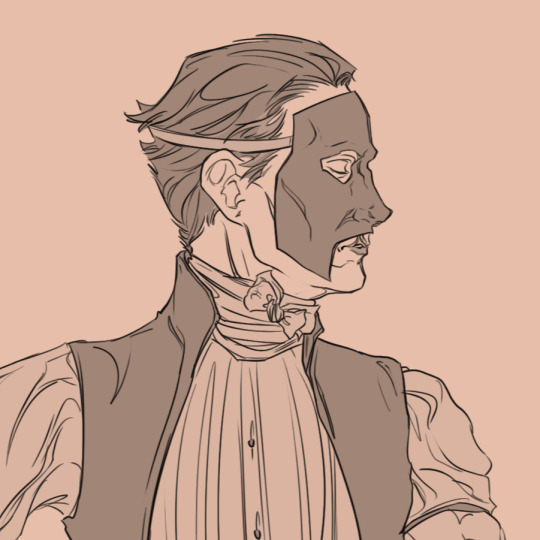
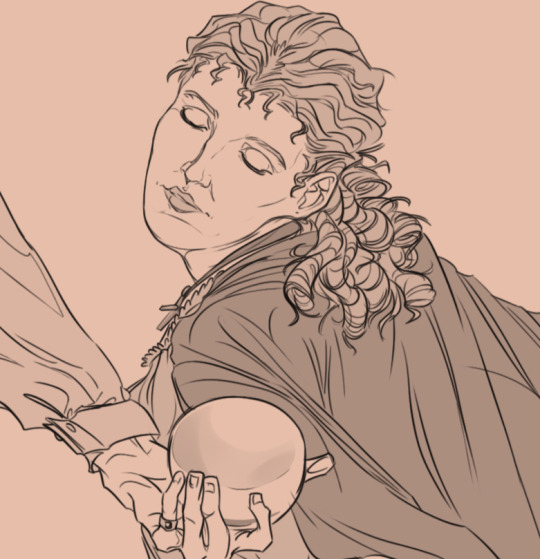
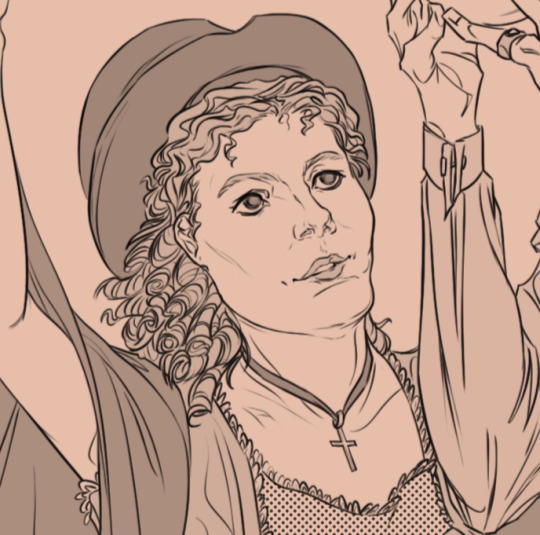

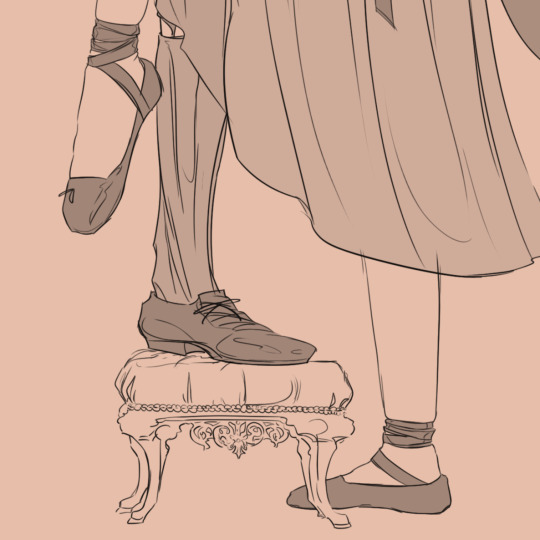
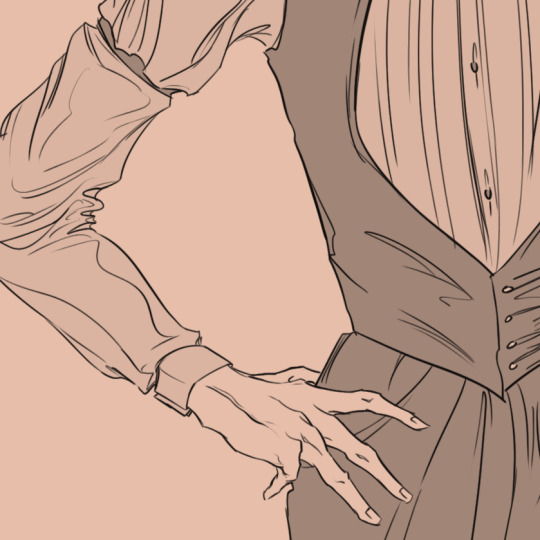
Fleetwood Mac Rumours photoshoot x Phantom of the Opera (details)
I based this version on christine on photos of Christine Nilsson and their clothes on 1880s fashion plates
147 notes
·
View notes
Text

#Christina Nilsson#Christine Nilsson#19th century#bel canto#swedish nightingale#opera#coloratura#singer#christine daaé#soprano#coloratura soprano#dramatic coloratura soprano#the nightingale#chest voice#opera singer#aria#diva#primadonna#le fantome de l'opera#le fantôme de l'opéra#the phantom of the opera#gaston leroux
8 notes
·
View notes
Text
That One Reference to That One Musical In Lies of P (that I think only I noticed)
Yeah you heard me.
Aside from the multitude of Pinocchio characters that litter the entirety of Krat, there's also a few other characters that are a reference to other things if you look hard enough. Veningi and his references to Batman, Giango and his reference to an actual famous alchemist - so on and so forth.
But there's one particular pair I don't see get mentioned in that list and would like talk about more:
The Red Actress and The White Lady
(spoilers below cut)
So first off there's actually two references between these characters - a reference to a musical AND a reference to a fairy tale - but since I said musical in the title I'll start off there.
Before we can reach the King of Puppets at the Estella Opera House, we have to brawl our way through Rosa Isabelle Street which is connected to Hotel Krat. If you roam around a bit, you get to encounter one of the fanciest Stalker bosses that wander the formerly entertaining street - The White Lady.

And no, her name is not Karen, but we'll learn that eventually.
Apart from being a difficult boss encounter and having the coolest outfit and mask EVER, her voice lines reveal early on that she is the sister of the famous Adelina Corday, the Red Actress. Given how devastating the Puppet Frenzy has been for every party involved, it's unsurprising that she takes her frustration and grief out on every puppet she comes across as it's likely her sister has perished to the hands of said puppets. Her locket even shows how close they were, wishing to share the stage of their dreams alongside each other.
Or so we presume.
After fighting our way through the streets we can finally reach the Opera House and encounter Adelina herself, tucked away in a side hall attempting to sing a song with her petrified throat and apologize to a woman named "Patricia". From there you can take on her last request - to feed her a plump apple full of juice to quench her thirst and restore her parched throat (using the Red Apple you can purchase from Polendina after finding a Krat Supply Box).
If you don't find her prior to fighting the King of Puppets, however, you only find her dead body lying on the ground with a locket containing a torn portrait of a girl and a scratched out name. Finding her prior to the fight will reward you her record "Fascination" along with said locket.

Now if you guys aren't getting the musical references yet (The White Lady's white mask, this Actress, and the ghastly theater with a swinging Chandelier prior to entering the King's boss arena) they're a nod to the Phantom of the Opera musical. However, Adelina's not a reference to the protagonist, Christine Daae -- she's actually a reference to Daae's rival, the Prima Donna Carlotta.
See, the characters Christine Daae and Carlotta were actually based on two real opera singers who also shared a rivalry: Christina Nilsson (left) as Christine Daae and -- wait for it -- Adelina Patti (right) as Carlotta Giudicelli who, in some adaptations, wore red as her main color.
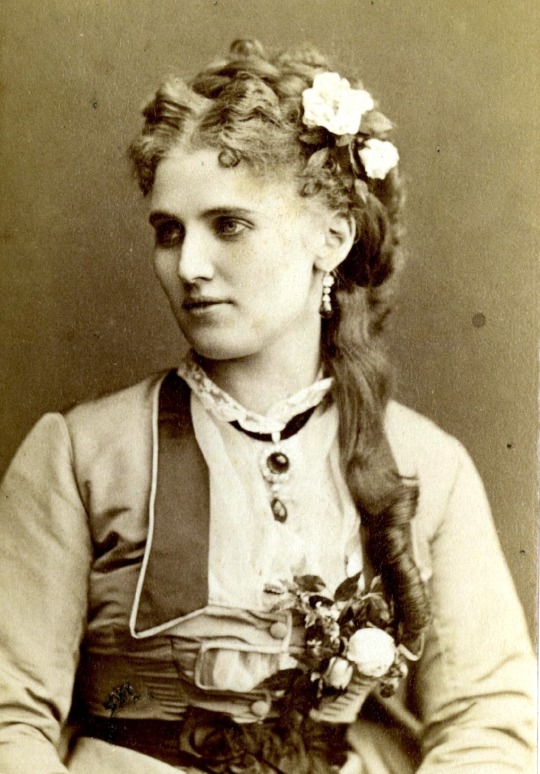
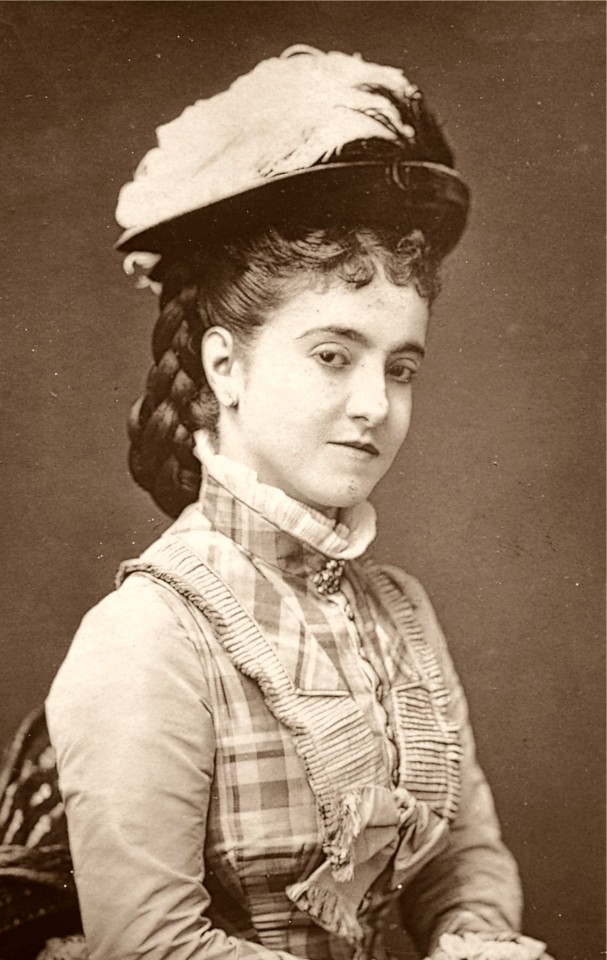
The reason that's so important is because when you complete her quest, Adelina in the game asks that we listen to her final confession before she dies: while striving for stardom her jealousy provoked her to get rid of her biggest rival by tricking her into drinking poison that would ruin her throat and prevent her from singing for good:
Patricia Corday, her sister, whom she is uncertain about the fate of given that she is unable to leave the Opera House.
Well, we know what happens.
We kill her prior to arrival, not as Patricia Corday but as the White Lady.
Yeah. Kinda messed up ;-;
So now aside from being the angelic singer who could have become "The White Goddess" according to one of her fans, The White Lady has become the Phantom of the Opera herself as she is unable to show her face on stage due to the lack of singing voice after being poisoned. Or you could argue Adelina became the Phantom as she's the one who dies alone in the Opera House. Either way, both sisters suffer a horrible fate apart from each other, with neither knowing what happened to the other.
Speaking of sisters, guess what fairy tale involves a pair of color coded sisters written by the Grimm brothers:

Snow White and Rose Red
Now I know the two aren't related to the other Snow White fairy tale (also written by the Grimm bros) but given how much crossover references are in Lies of P it doesn't surprise me Neowiz decided to merge the two stories together so bear with me.
The sisters can fill in each other's roles as Snow White (The White Lady) and Rose Red (The Red Actress), but the rest of their story follows the original Snow White and the Seven Dwarves:
Adelina, the jealous sister, tricks Patricia into drinking poison that ruins the source of her charm the same way the jealous step mother tricks Snow White into eating a poisonous apple so she can be the prettiest person on the planet. Ironically, Adelina is the one who perishes after eating an apple - petrified and frozen by the disease, while Patricia became her own Prince by becoming a Stalker after her voice became ruined.
It's a loose reference, sure, but honestly it's a pretty cool one nonetheless!
I'm really looking forward to all the other references the game devs decide to hide in Lies of P (heck I didn't even put together Champion Victor being a Frankenstein reference or Murphy the Robo Cop boss), along with maybe future games they have in store (I see you Rise of P ending I know).
But I'll end my thoughts here for now! Check out the game yourself if you ever get the chance, it's SO worth it!!
#lies of p#lop#lies of p spoilers#lop spoilers#adelina corday#adelina the red actress#the red actress#the white lady#white lady boss#patricia corday#text post
43 notes
·
View notes